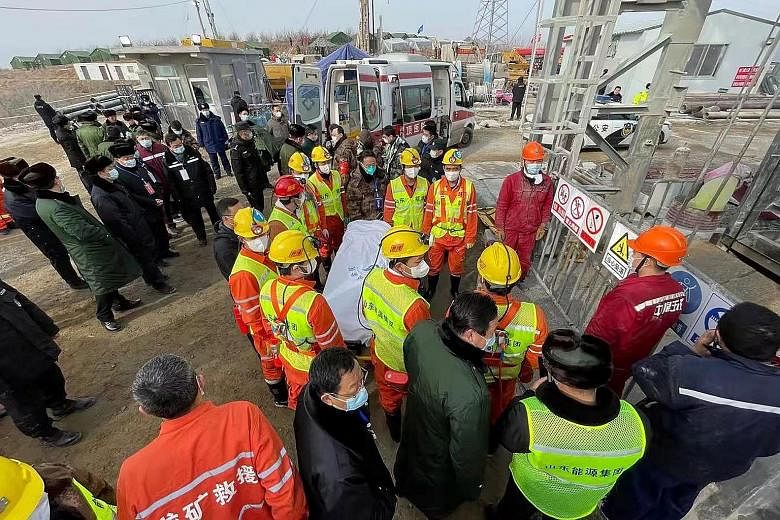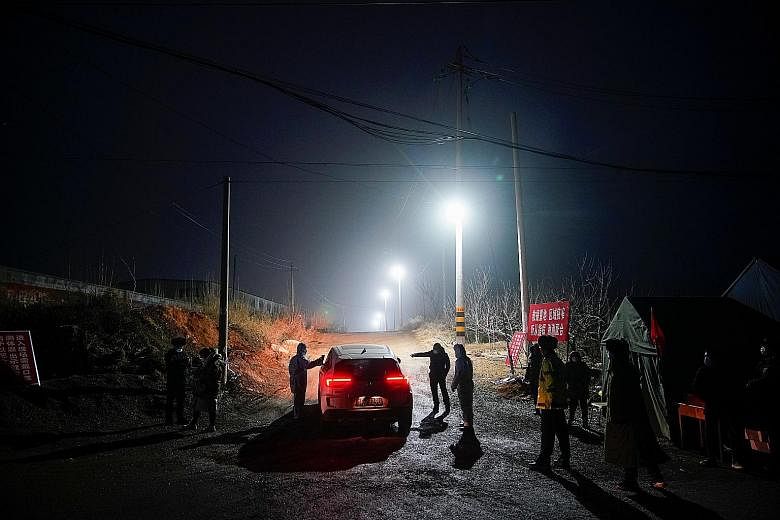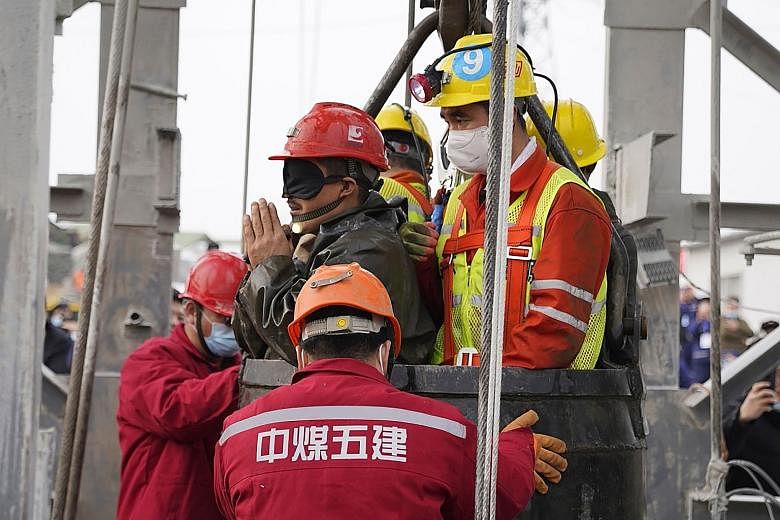On Jan 10, a mine shaft in a Shandong gold mine collapsed after an explosion, trapping 22 miners.
But local officials in Yantai sat on the news for nearly 30 hours before notifying the provincial authorities, hampering rescue efforts. It took two weeks before 11 miners were pulled from deep underground, in an effort that had much of the country transfixed.
The accident - in which 10 were killed, with one still missing - again cast the spotlight on China's mining industry and its spotty safety record.
Mining accidents are not uncommon in this country, and the industry's safety regulations can be poorly enforced.
According to the National Mine Safety Administration (NMSA), there were 573 mining-related deaths last year - a 22 per cent decline from the previous year - and most were from non-coal mines, including those producing precious and non-precious metals.
But despite promises of reform and improving safety standards, mining officials admitted earlier this month that the industry is still somewhat loosely regulated, with poor safety standards.
Mr Zhao Yuhui, a spokesman for the NMSA, said: "Laws and regulations have been repeatedly violated… enterprises aren't responsible; supervision can be increased… and more lessons can be learnt from past accidents."
Last month, 23 miners died after a carbon monoxide leak at a coal mine.
In September, 16 workers were killed at another mine on the outskirts of Chongqing, also due to carbon monoxide.
Yet, workers continue to flock to the industry.
According to Hong Kong-based labour rights group China Labour Bulletin (CLB), mining offers jobs with better pay for migrant workers, compared with other sectors like construction. Some four million workers are willing to take the additional risks for a few thousand yuan more, a substantial difference in rural areas.
This is especially prevalent when coal prices increase and illegal mines reopen, with little to no safety standards.
China is also the world's top producer of rare earths, which are integral in the production of electronic items ranging from computer chips to mobile phones, and even wind turbines.
CLB spokesman Aidan Chiu said: "The government conducted a lot of checking but the effects are small. A lot of mines which have accidents have received repeated warnings but they just pay the penalty and continue their work."
For Mr Zhang, a former miner who now works as a delivery driver, it was the constant fear of not knowing when a serious accident would happen that led him to leave the industry.
The 28-year-old Hebei native, who declined to give his full name, worked for three years in a coal mine in Datong, in northern Shanxi province.
"There were many times we had to run out because there were overly high levels of toxic gas, or there was a power trip and we were left in darkness… Maybe I was not used to it, but it was very frightening," he told The Sunday Times.
While he now makes about 8,000 yuan (S$1,600) a month as a driver, about 20 per cent less than he used to, Mr Zhang feels safe and is unlikely to have the lung problems long-time miners often have.
Mine officials contacted by The Sunday Times declined to be interviewed, citing sensitivities.
But former mine workers have previously said minor incidents are often not reported so as to burnish safety records.
Officials also admitted on Friday that safety issues are still a big problem in mines.
"The illegal construction and production of coal mines have not been stopped," said chief engineer Li Wanchun of the Emergency Management Department. "There is still a big gap in the implementation (of safety protocols)."
Meanwhile, China has been trying to wean itself off coal as an energy source - in part to lower costs and also to meet an ambitious national target of becoming carbon neutral by 2060.
And there are efforts to increase the use of technology in the labour-intensive industry.
At the Xinyuan mine in Shanxi, collection of data like temperature and methane concentration is being powered by 5G technology from Huawei.
"It will take time, but in the future, miners will wear suits and white shirts," manager Han Weihai of Huawei's mine projects in Shanxi told Bloomberg News in an interview.
"People no longer want to work in a mine, especially young people with college degrees."



